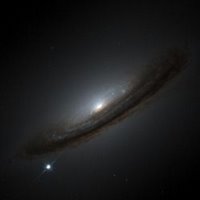

-- Dixon to Garbincius: May 14, 2005 --
Subject: SUPERNOVA FROM EXPERIMENTATION WITH WORLD RECORD LUNINOSITY: REQUEST MORATORIUM ON HIGH-ENERGY PHYSICS EXPERIMENTATION AT FERMI NATIONAL ACCELERATOR LABORATORY
For: Dr. Peter H. Grabincius, Deputy Head, Accelerator Division, Fermi National Accelerator Laboratory, P. O. Box 500, Batavia, Illinois
Dear Dr. Grabincius,
edMany thanks for your most kind reply to this correspondence(scroll down for earlier correspondance). The separation between the counter-rotating bunches of protons and antiprotons is maintained by the Time Line Generator (TLG) which defines the start and cycle times for every major system in the accelerator complex. Yet there may be EAPS trips due to TLG changes according to the Accelerator Update now posted.
As the rotational path of the proton and antiproton bunches is affected by precessional and other entropic influences, so also is the TLG subject to entropic effects, which everyone who works with modern computation is fully aware of, and that which has been so carefully separated may then form a coalescence and create a larger intersecting cross-section than now planned.
In this way, the "vanishingly small" probability of a catastrophic focal point for the vast energies in the accelerator becomes a reality thus creating a transition towards deSitter space releasing the force of a Type Ia supernova.
Your most kind help in clarifing this grave concern is gratefullyappreciated.
With greatest respect,
Paul W. Dixon, Ph.D.
Professor of Psychology and Linguistics
----- Garbincius to Dixon, dated May 5, 2005-----
Subject: SUPERNOVA FROM EXPERIMENTATION WITH WORLD RECORD LUNINOSITY. . .
OK, Dr. Dixon, I see your statistical point. Yes we do try to get as many interactions as possible. Yes, we often get more than one interaction per beam crossing, which can often be reconstructed as coming from separated positions withing the interaction point. Yes, we are trying to get Luminosities corresponding to a handfull of interacations per beam crossing.
However, we have 36 proton bunches (each <>The goal of increased luminosity over the years at the accelerator attests to this effect. Variation in the number of collisional interactions during a run creates an action upon the potential barrier towards de Sitter space. Where all of the possible particle interactions may not occur, a statistically significant number must have collisional interaction or the accelerator would not funtion as a research instrument.
Since this collisional interaction is dependent on the emittance (focal) properties of the accelerator beam guides, the nanometric diameter of the beam concentrates the interacting beams into a point of energy focus similarly to concentrating the energies of photons from the sun with a magnifying glass. Coherence is, therefore, not invoked as a necessary principle for the production of 10^42 electron volts, only variation in luminosity due to statistical variation in the number of particle collisional interactions - coupled with the energetics of matter (protons) and antimatter (antiprotons) collisional interaction energy production following the formula e=mc^2 is deemed necessary for this level of eV generation.
The paradigm in use within the physical sciences is an isomorphic (one on one) model. What is here invoked, is a stochastic, multiply interacting paradigm - also termed synergism. In a philosophical sense, it may be conceptually postulated that this paradigm maps objective reality more closely. Within a phenomenological approach to physics, the isomorphic paradigm may yield some oversights in your equations. These oversights, as is often the case in high-energy physics, may lead to a catastrophic loss of life, the destruction of the immediate laboratory and its building as well as some portions of the surrounding territory.
What is here postulated, is this oversight, where the energies now occuring in the accelerator are those found some 10^-9 to 10^15 seconds after Big Bang at the point origin of the universe will lead to much greater catastrophe by forming a transition towards de Sitter space thus releasing the force of a Type I supernova on our planet and solarsystem as well some nearby stars.
Since this is a matter of such urgency please forgive the rapidity of this reply. Should further discusssion and information be required, please call on us in this regard at any time.
All best wishes,
With greatest respect,
Paul W. Dixon, Ph.D.
Professor of Psychology and Lingusitcs
--- Garbincius to Dixon dated May 4, 2005 ----
My patience is finally done. I just have to respond to an eggregious error in your calculation. There is NO justification in multiplying a total energy, sqrt(s) = 2 TeV by a luminosity of 122 x 10^30 to get any sensible unit on the order of 10^42 electron volts. Our protons and antiprotons interact one at a time, so the total energy per collision is only sqrt(s) = 2 TeV. The collisions arei ndependent, not coherent!
As for cosmic rays, if you take 10^19 eV as the maximum energy observed, this is 10^10 GeV and total energy = sqrt(s) = sqrt(2*M*10^10 GeV)where M is the mass of the nucleon ~ 1 GeV, so sqrt(s) ~ 1.4 x 10^5 GeVwhich equals to sqrt(s) = 140 TeV the energy of the Tevatron collider!
Peter H. Garbincius Deputy Head, Accelerator Division, Fermilab, MS 306, (630)840-3693
